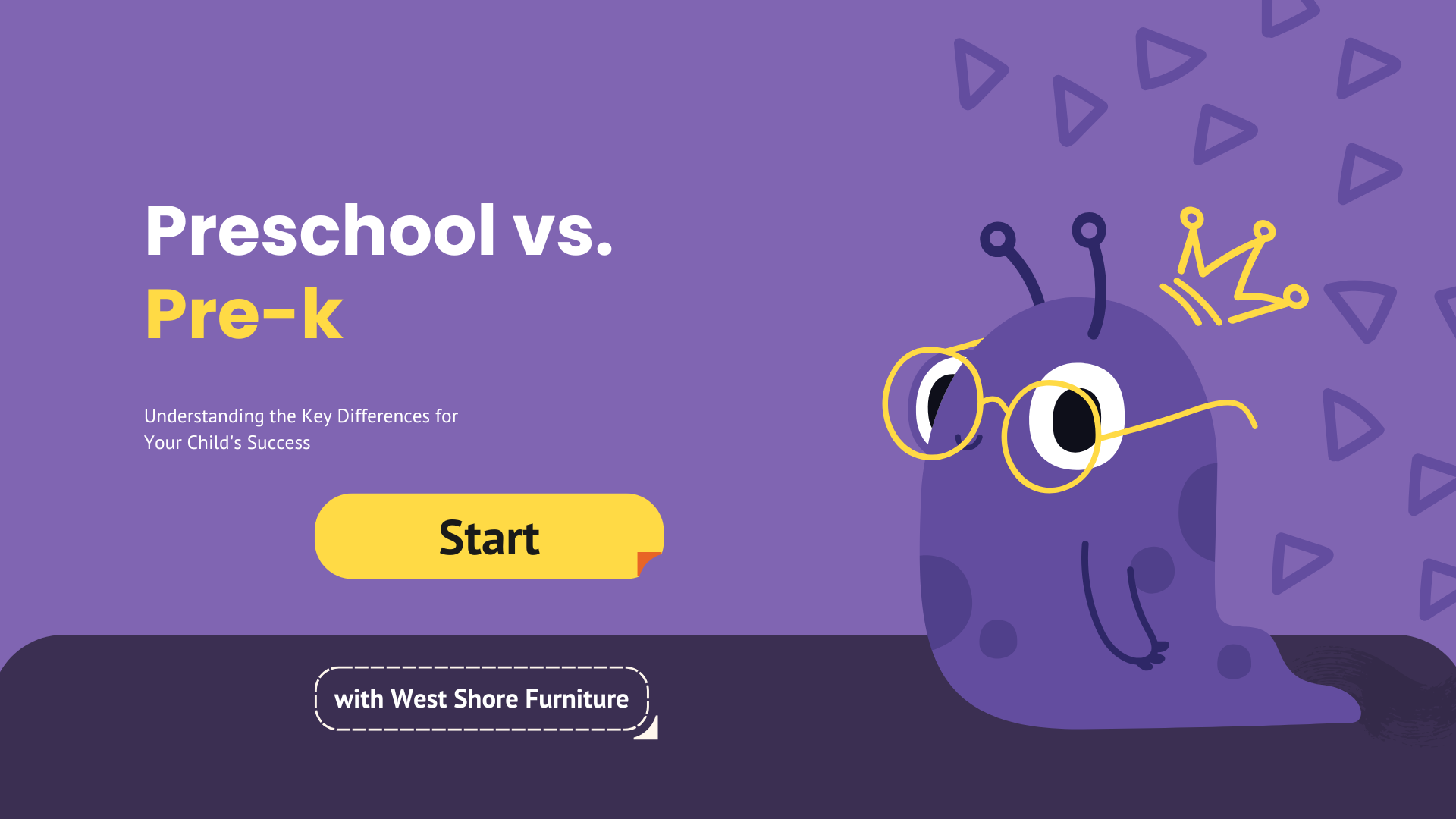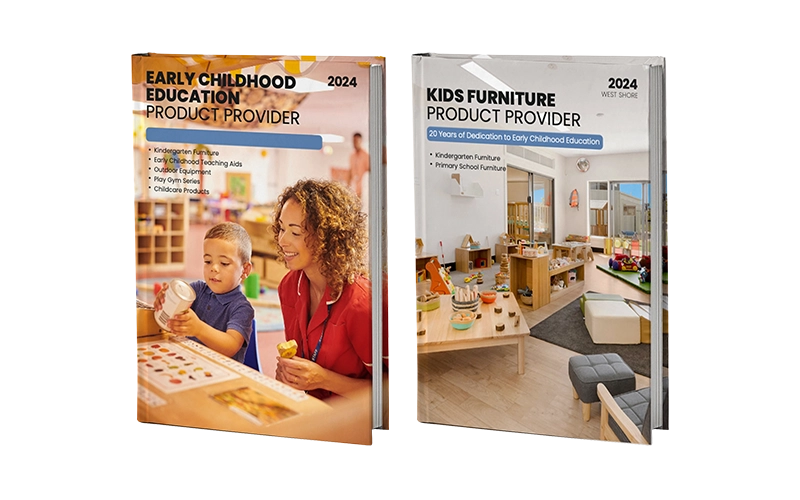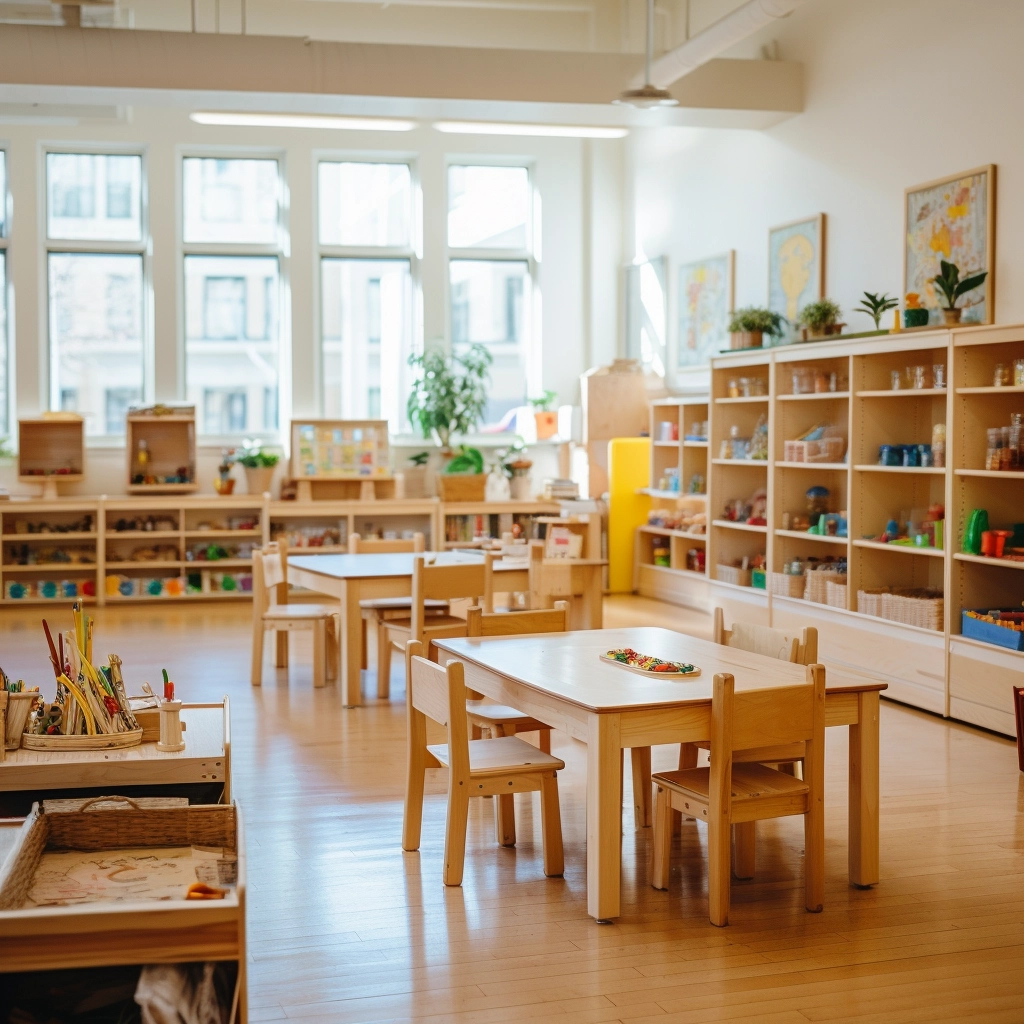Are you wondering whether your child needs preschool or pre-K? Many parents feel confused by the similar terms, yet the choice has a big impact on children’s development.
The main difference between preschool and pre-K is age group and educational focus. Preschool generally caters to children aged 3-4 years, focusing on basic social, motor, and cognitive skills. Pre-K vs preschool often refers to the slightly more structured environment that pre-K programs provide for children aged 4-5, where the focus shifts towards preparing children for kindergarten.
Understanding these distinctions will help you choose your child’s educational environment. Keep reading to learn more about the features of both programs and how they contribute to early childhood development.

Introduction: Preschool vs Pre-K
Preschool:
Preschool is a child’s first formal experience with a structured learning environment. Children ages 3-4 are introduced to a more socialized, semi-structured setting that helps them grow cognitively, socially, and emotionally. The preschool programs emphasize play-based learning, which fosters imagination, curiosity, and exploration. These early goals for PreK focus on developing the foundation for future academic success.
Children are introduced to simple concepts such as letters, numbers, colors, and shapes at this stage. They are also encouraged to interact with other children, aiding their socialization skills. Preschool is not meant to be academically rigorous but rather an environment where children can learn through play, develop foundational skills, and build their emotional and social intelligence.
This phase is essential in laying the groundwork for a child’s future educational experiences. Parents can expect their child to gain independence, improve fine motor skills, and develop an understanding of classroom routines. Preschool is about expertise and foundation, not pressure.
Pre-K:
Pre-K, short for pre-kindergarten, serves children the year before they enter kindergarten, typically around ages 4 to 5. Pre-K programs are more focused on preparing children for the academic and social challenges they will face in kindergarten. While still incorporating play, pre-K introduces a more structured environment, with a curriculum that includes reading readiness, basic math concepts, and writing skills. These programs align with early activities for pre-K and kindergarten and are designed to help children meet key developmental milestones.
In pre-K, children learn to follow more structured schedules and routines, preparing them for the classroom settings they will encounter in kindergarten. Teachers in pre-K classrooms often focus on building skills that help children succeed in a school environment, such as following directions, sharing, taking turns, and developing self-control.
Additionally, pre-K programs are slightly more academic than preschool, focusing on early literacy, numeracy, and basic science concepts. Children should be well-prepared for social and academic kindergarten by the end of pre-K.
Why Preschool and Pre-K Are Important?
Research shows that quality early childhood education, whether it is preschool or pre-K, makes a real difference in a child’s future. Studies from the National Institute for Early Education Research (NIEER) find that children who attend strong preschool programs often develop better language, thinking, and social skills than those who do not. The American Educational Research Association (AERA) also highlights that early learning helps children feel more prepared for kindergarten and supports long-term success, such as staying on track in school and graduating from high school.
Preschool is important because it gives children aged 3–4 a safe and playful environment where they develop independence, social interaction, and early curiosity. Pre-K, serving children aged 4–5, plays an equally crucial role by reinforcing literacy, numeracy, and self-regulation skills that bridge the gap to kindergarten. According to research from Harvard’s Center on the Developing Child, building these foundational skills early not only supports academic learning but also fosters resilience and positive lifelong attitudes toward education (Harvard Center Resource).
Together, preschool and pre-K provide a continuum of learning opportunities. Each stage is important in its own way. Preschool lays the foundation through exploration and play, while pre-K strengthens academic and social readiness for formal schooling.

Preschool vs Pre-K: Which Should Your Child Attend?
Pre-K:
Pre-K is ideal for children about to enter kindergarten or who are in their final year before kindergarten. If your child is 4 to 5 years old and ready to begin focusing on more structured learning, pre-K offers an excellent foundation. It provides a more academic environment focusing on early literacy, basic math concepts, and social-emotional skills necessary for kindergarten. Pre-K is perfect if your child is ready for a more routine-based setting and you want them to develop school readiness skills, such as following instructions, working with others, and engaging in activities that prepare them for the expectations of elementary school.
Additionally, pre-k tuition can vary depending on location and whether the program is public or private, but it’s important to factor in the long-term benefits of early education.
Preschool:
Preschool is ideal for younger children, typically between 3 and 4. It offers a more relaxed, play-based environment, fostering independence and exploration if your child is in the early stages of social, emotional, and cognitive development. Preschool is less focused on academic achievement and more on helping children develop foundational skills, such as social interaction, communication, and motor skills. Preschool is an excellent choice if you want your child to experience a low-pressure setting while learning key early skills.
Suppose your child is still becoming accustomed to being in a group setting and learning basic social norms. In that case, preschool can provide a nurturing environment where children can develop independently. It allows children to build their emotional and social foundations before entering pre-K’s more structured academic world.
Preschool vs Pre-K: What Certifications Do Teachers Need?
Whether teaching Preschool or pre-K, early childhood educators play a vital role in shaping a child’s first learning experiences. However, what many school founders or procurement officers may overlook is that the qualifications required for these teachers are not always the same, and they often depend on regional regulations and the educational philosophy of the school.
General Requirements for Preschool Teachers
In most countries, preschool teachers must hold a certificate or diploma in Early Childhood Education (ECE) or a related field. Some typical documents include:

- Early Childhood Education (ECE) Certificate or Diploma
This is often the minimum requirement for working with children aged 3-4 years. It equips teachers with skills in child development, classroom management, and play-based learning. - CPR and First Aid Certification
As preschool involves physical activities and younger children, health and safety training is necessary. - Background Checks / Child Abuse Clearance
Most licensing authorities require proof that the teacher has no criminal history or child abuse offenses. - Local Teaching License or Registration (if applicable)
In some areas, teachers must register with local education boards or government agencies before they are allowed to work in early childhood settings.
Additional Requirements for Pre-K Teachers
Since Pre-K is more academically structured and prepares children for kindergarten, the expectations for teachers can be higher:
- Bachelor’s Degree in Early Childhood Education or a Related Field
Many government-funded or accredited Pre-K programs, especially in places like the U.S., require teachers to hold a bachelor’s degree. - State Teaching Certification (e.g., Teaching License or Pre-K Endorsement)
In some regions, teaching Pre-K in a public setting requires a teaching license with a specialization or endorsement in early childhood. - Curriculum Training (e.g., Montessori, Reggio Emilia, or other specific methods)
Teachers often need additional certification from a specific training organization for Pre-K programs based on a particular educational philosophy, like Montessori. - Ongoing Professional Development Hours
Many institutions require Pre-K teachers to complete yearly training hours in subjects like child psychology, inclusive education, or classroom technology.
The Origins of Preschool and Pre-K
The idea of early education did not appear overnight. It grew out of a long tradition of educational reformers who believed that the early years of life are the foundation for later success. By the late 19th and early 20th centuries, movements in Europe emphasized the importance of structured environments where young children could learn through play, interaction, and guided exploration. Out of this movement came what we now recognize as preschool, while the concept of pre-K would not emerge until much later in the United States.
Preschool owes much of its development to the work of Friedrich Fröbel, who opened the first kindergarten in Germany in 1837, and Maria Montessori, who in the early 1900s introduced her child-centered method. Froebel’s vision focused on play, creativity, and nurturing imagination, while Montessori emphasized independence, sensory-based learning, and purposeful activity. These two approaches shaped preschool as a place for children ages 3–4 to grow socially and emotionally in a safe, exploratory setting before formal schooling.

Pre-K, on the other hand, arose in the United States during the 1960s as part of a broader effort to reduce educational inequality. The Head Start program, launched in 1965, was designed to prepare children from disadvantaged backgrounds for kindergarten by focusing on language, literacy, and social skills. Unlike preschool, which grew from educational philosophy, pre-K was rooted in public policy and research on school readiness, targeting children aged 4–5 with a more structured approach to ensure they could succeed in elementary school.
Origins Compared
| Aspect | Preschool (Ages 3–4) | Pre-K (Ages 4–5) |
|---|---|---|
| Historical Roots | Froebel’s Kindergarten (1837); Montessori’s Method (1900s) | Head Start program in the U.S. (1965) |
| Primary Motivation | Encourage play, independence, imagination | Ensure school readiness, reduce inequality |
| Educational Focus | Play-based exploration, social-emotional growth | Encourage play, independence, and imagination |
Making the Right Choice for Your Child
Choosing between Preschool and pre-K is not just about age. It is about understanding your child’s developmental stage, emotional needs, and readiness for academic structure. Both paths offer essential foundations for lifelong learning, but each serves a different purpose in early childhood education. Whether your child thrives in a play-based environment or is ready for more focused academic preparation, making an informed decision will help set them up for long-term success.
At West Shore Furniture, we understand how important it is for educators and school founders to create the right learning environment from day one. We offer a full-service solution for teachers preparing to open Preschool or pre-K classrooms. From thoughtfully designed Montessori and Reggio-inspired furniture to high-quality classroom materials, our products are crafted to support both play-based and academically structured learning. We help you align your classroom setup with educational goals, whether you are fostering imagination in Preschool or encouraging early literacy and math in pre-K.
By choosing West Shore Furniture, you are not just purchasing furniture. You are partnering with a team that understands early childhood education’s pedagogical and practical needs. We help educators focus on what matters most: creating a nurturing, inspiring, and developmentally appropriate space for every child.
FAQ: Preschool vs Pre-K
Q: What is the main difference between preschool and pre-K?
A: The primary difference between preschool and pre-K lies in the age group and educational focus. Preschool typically serves children aged 3-4 years, focusing on foundational skills like socialization and basic motor skills. Pre-K, for children aged 4-5, offers a more structured environment with an emphasis on preparing for kindergarten, focusing on early literacy, numeracy, and following a more rigid routine.
Q: Is preschool or pre-K better for my child?
A: The choice between preschool vs pre-K depends on your child’s age and readiness. Preschool is ideal for younger children (ages 3-4) who are still in the early stages of development, while pre-K is suited for children ages 4-5 who are ready for more structured academic learning, preparing them for kindergarten.
Q: What skills do children learn in preschool vs pre-K?
A: In preschool, children focus on social skills, motor skills, and simple academic concepts like colors, numbers, and shapes. In pre-K, the curriculum shifts towards preparing for kindergarten with a focus on early reading, writing, and math skills, as well as following structured schedules and routines.
Q: Can my child attend both preschool and pre-K?
A: Some children may attend preschool at age 3 and transition to pre-K the following year. This approach ensures that children gain foundational social and emotional skills in preschool and then focus on academic readiness in pre-K.
Q: How do preschool and pre-K programs differ in terms of teaching methods?
A: Preschool often emphasizes play-based learning and exploration, while pre-K introduces more academic activities, including structured lessons on early literacy and numeracy. Pre-K programs tend to follow a curriculum designed to ensure children are ready for the rigors of kindergarten.
See Excellence in Action: Our Boutique Projects
Curious to see what our beautifully designed, real-life kindergarten projects look like?
[Click here to explore our real preschool or pre-k project cases.]






